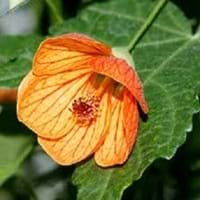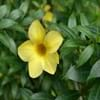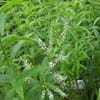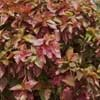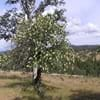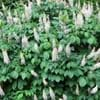What is
Life Span
Annual
Perennial
Type
Shrub
Perennial
Origin
Brazil
Europe, Eastern Europe, Northern Europe, Southern Europe, Western Europe, Russia, Siberia
Types
Abutilon Hybridum
Abutilon Megapotamicum
Abutilon Palmeri
not available
Number of Varieties
200
27
Not Available
Habitat
Grassland, Rocky areas
damp meadows, ditches, Fields, Hay fields, shores, springs, Swamps
USDA Hardiness Zone
8-10
3-7
AHS Heat Zone
10-1
7-1
Sunset Zone
H1, H2, 8, 9, 12, 13, 14, 15, 16, 17, 18, 19, 20, 21, 22, 23, 24
1a, 1b, 2a, 2b, 3a, 3b, 4, 5, 6, 7, 14, 15, 16, 17
Habit
Clump-Forming
Rosette/Stemless
Information
Plant Size
Minimum Height
60.00 cm
99+
61.00 cm
99+
Minimum Width
90.00 cm
99+
60.00 cm
99+
Plant Color
Flower Color
Yellow, Red
White, Pink, Light Pink, Rose
Flower Color Modifier
Bicolor
Bicolor
Fruit Color
Tan
Purple, Bronze, Brown
Leaf Color in Spring
Green, Gray Green, Dark Green
Green
Leaf Color in Summer
Green, Gray Green, Dark Green
Dark Green
Leaf Color in Fall
Green, Gray Green, Dark Green
Dark Green
Leaf Color in Winter
Green, Gray Green, Dark Green
Light Green
Shape
Leaf Shape
Heart-shaped
Long linear and narrow
Thorns
No
No
Season
Plant Season
Spring, Summer, Fall
Spring, Summer
Growing Conditions
Sunlight
Full Sun, Partial Sun
Full Sun, Partial Sun
Growth Rate
Fast
Fast
Type of Soil
Loam, Sand
Clay, Loam, Sand
The pH of Soil
Acidic, Neutral, Alkaline
Acidic, Neutral, Alkaline
Soil Drainage
Average
Average
Bloom Time
Indeterminate
Late Spring, Early Summer
Repeat Bloomer
Yes
No
Tolerances
Not Available
Drought
Care
Where to Plant?
Container, Ground, Pot
Container, Ground, Pot
How to Plant?
Grafting, Seedlings, Transplanting
Divison, Seedlings
Plant Maintenance
Medium
Low
Watering Plants
Watering Requirements
Form a Soil ring to water efficiently, Never Over-water, Requires regular watering, Use Mulches to help prevent water loss during hot and windy weather, Water Deeply
Water daily during growing season
In Summer
Lots of watering
Lots of watering
In Spring
Moderate
Moderate
In Winter
Average Water
Average Water
Soil
Soil pH
Acidic, Neutral, Alkaline
Acidic, Neutral, Alkaline
Soil Type
Loam, Sand
Clay, Loam, Sand
Soil Drainage Capacity
Average
Average
Sun Exposure
Full Sun, Partial Sun
Full Sun, Partial Sun
Pruning
Prune in spring, Remove dead leaves, Remove deadheads
Remove deadheads
Fertilizers
All-Purpose Liquid Fertilizer
All-Purpose Liquid Fertilizer, Fertilize in early spring, Fertilize the soil before planting, organic fertlizers, slow-release fertilizers
Pests and Diseases
Red blotch
Healthy tree
Plant Tolerance
Drought
Drought
Facts
Flowers
Showy
Yes
Flower Petal Number
Single
Single
Fruits
Showy Fruit
No
Yes
Edible Fruit
No
No
Fragrance
Fragrant Flower
Yes
No
Fragrant Fruit
No
No
Fragrant Leaf
No
No
Fragrant Bark/Stem
No
No
Showy Foliage
Yes
Yes
Showy Bark
No
No
Foliage Texture
Medium
Medium
Foliage Sheen
Matte
Glossy
Evergreen
No
No
Invasive
No
Sometimes
Self-Sowing
Yes
Yes
Attracts
Birds, Hummingbirds
Bees, Bumblebees, Butterflies, Hoverflies, Insects
Allergy
Not Available
allergic reaction
Benefits
Uses
Aesthetic Uses
Beautification, Showy Purposes
Showy Purposes
Beauty Benefits
Not Available
Skin irritation, Skin Problems
Edible Uses
Yes
Yes
Environmental Uses
Air purification
Air purification
Plant Benefits
Medicinal Uses
Diarrhea, Lung Problems
Not Available
Part of Plant Used
Whole plant
Whole plant
Other Uses
Showy Purposes
Oil is used in perfume, soaps, creams, etc., Used as Ornamental plant
Used As Indoor Plant
Yes
No
Used As Outdoor Plant
Yes
Yes
Garden Design
Bedding Plant, Container, Feature Plant, Foundation, Hedges, Mixed Border, Topiary, Bonsai, Espalier, Tropical
Bog Garden, Wildflower
Scientific Name
Botanical Name
ABUTILON megapotamicum
LYCHNIS flos-cuculi
Common Name
Indian mallow or Velvetleaf
Ragged Robin
In Hindi
Abutilon
Ragged Robin
In German
Abutilon
Kuckucks-Lichtnelke
In French
Abutilon
Ragged Robin
In Spanish
Abutilon
petirrojo desigual
In Greek
Abutilon
ragged Robin
In Portuguese
Abutilon
Ragged Robin
In Polish
Abutilon
Ragged Robin
In Latin
Abutilon
Robin ragged
Classification
Kingdom
Plantae
Plantae
Phylum
Tracheophyta
Anthophyta
Class
Magnoliopsida
Equisetopsida
Order
Malvales
Caryophyllales
Family
Malvaceae
Caryophyllaceae
Genus
Abutilon
Lychnis
Clade
Angiosperms, Eudicots, Rosids
Angiosperms, Core eudicots, Eudicots
Tribe
Malveae
Not Available
Subfamily
Malvoideae
Not Available
Number of Species
200
99+
Not Available
|
||
|
||
|
